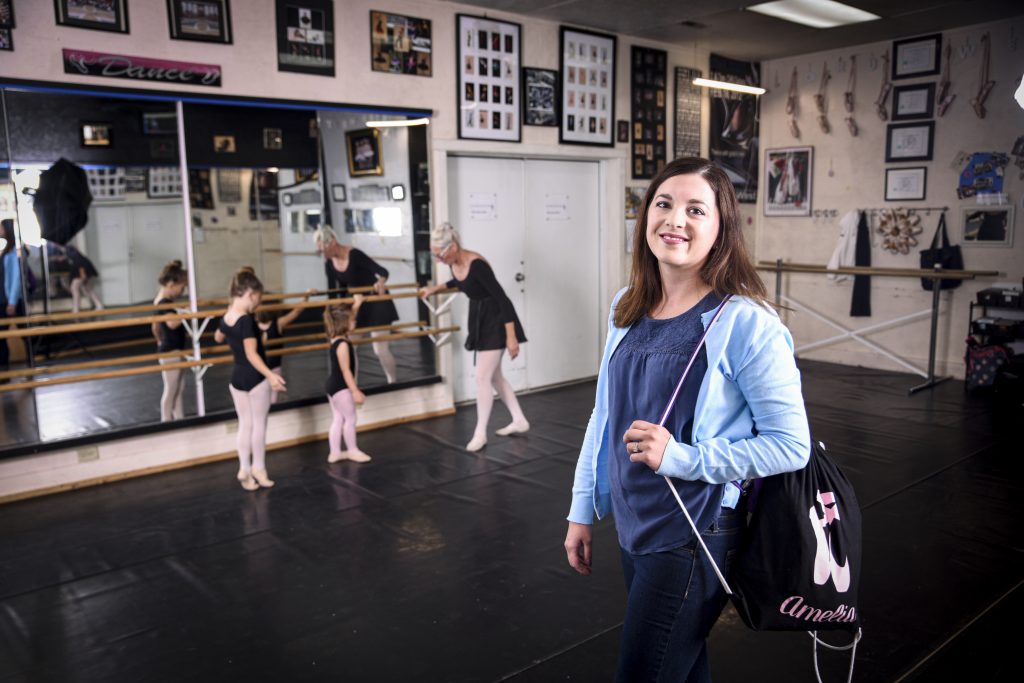Summer break had barely begun when my seven-year-old daughter began compiling a list of the activities she wanted to be in this fall as she begins second grade. In no time the list contained cheerleading, jazz, tap, rock-climbing, and guitar lessons. I started to weigh the pros and cons.
My daughter recently became involved in 4-H and has taken ballet one night a week for the past three years. That schedule has not overwhelmed us, but I am cautious to make sure she and her four-year-old sister have time to just be kids. I try to balance the multitude of benefits that come from involving our children in a variety of activities with their other needs, such as getting plenty of sleep and having ample time to complete schoolwork.
When it comes to signing children up for extra-curricular activities, Dr. Kimberly Hushagen of Black Hills Pediatrics recommends starting with one or two activities and seeing how the child does with them. More activities can be added if the child requests them and can still balance other aspects of their life. A good place to start is to look at the child’s interests, remembering that extracurriculars include more than just sports.
“There are numerous positive effects to extra-curricular activities including socialization, teamwork skills, leadership skills, decreased high-risk behaviors, and positive outcomes later in life including college completion,” Dr. Hushagen said.
There are many ways we as parents can support our children as they try new activities.
The Over-Scheduler
Some children are excited to try any activity available to them. While enrolling in a new activity can seem exciting, over-scheduling can be detrimental to the child. Dr. Hushagen said children can show that they are overscheduled in many ways, such as being more irritable or having stomach aches or more frequent headaches. Those problems can easily spread to other aspects of their lives and impact them negatively. It is important to take note if the child is not getting enough sleep during the day or is struggling in school.
“Trying to encourage their growth rather than pressuring them to win or be the best is the most important way we can support children in their activities,” she said.
The Quitter
The registration fees are paid, uniforms are purchased, and practice or lessons are underway; but what happens if the child becomes disinterested in the activity and wants to quit? Dr. Hushagen recommends having an open discussion about why the child wants to quit the activity so you can better understand his or her reservations.
“If it is a new activity they are starting, you could compromise on a set number of times they have to attend before they decide whether they want to continue,” she said. “Pushing a child to continue to do an activity that they do not enjoy can lead to both psychological and physical side effects.”
The Shy Kid
Some children might be interested in trying new activities, but might be shy or afraid to get started. Dr. Hushagen said starting with one activity that meets infrequently is a good way to gradually introduce the child. Choose an activity that aligns with his or her favorite interests.
“As they become more comfortable, you may find them asking you to become more involved,” she said.
Let your child lead
As with everything in life, the amount of time for extracurriculars varies by child. Some children are able to tolerate more activities than others. It is important to choose activities that align with our children’s interests and allow them to have fun, learn, and grow.
It is not necessary to sign up for a club or professional lessons to try out a new activity. Dr. Hushagen said family activities like doing Zumba, biking, or taking a brisk walk around the neighborhood are also great ways to get everyone moving. The recommended amount of exercise for school-age children is 60 minutes per day of moderate to vigorous intensity exercise.
In our family, we are still weighing options when it comes to activities. We are allowing our young daughters to dabble in some they enjoy while making sure we have time for priorities like family dinners, adequate sleep, and free play. Like all parents, our goal is to make sure we help our children choose activities that leave them happy, healthy, and feeling good about themselves.
WORDS: KATIE WIEDERHOLT
PHOTOS: JESSE BROWN NELSON

